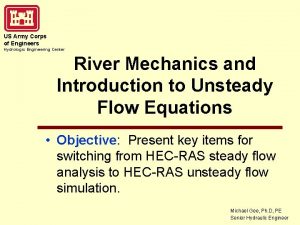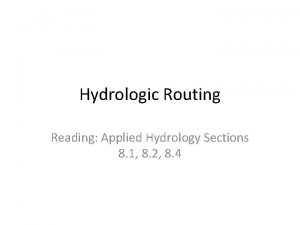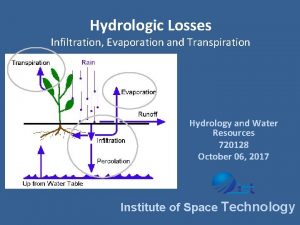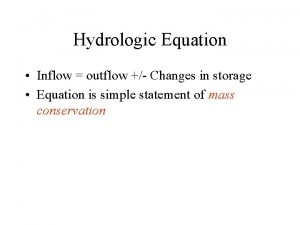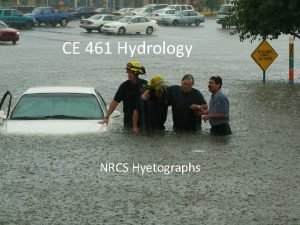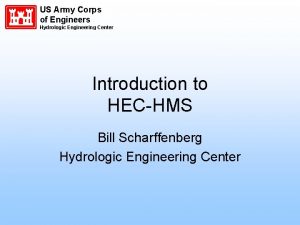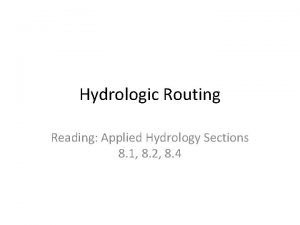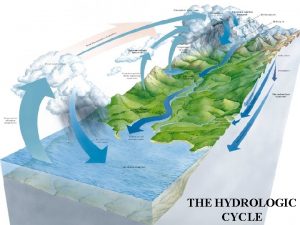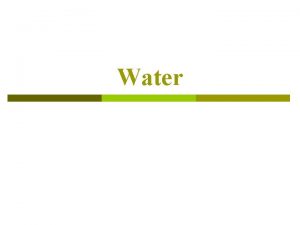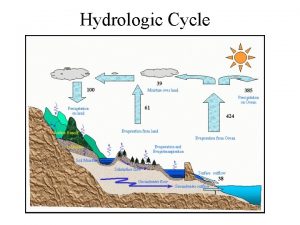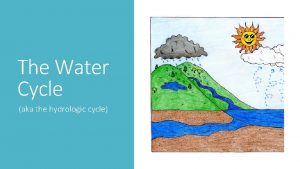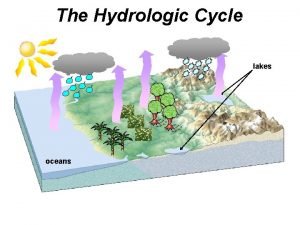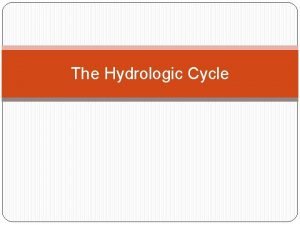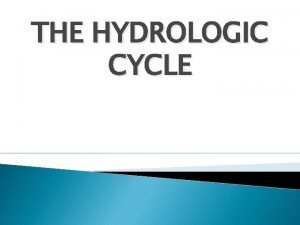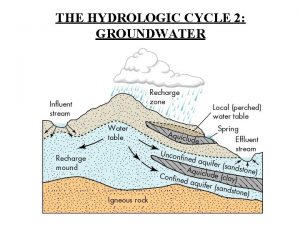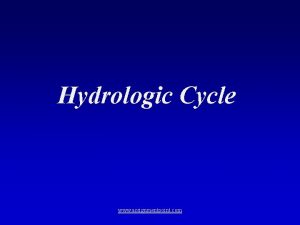The Water Cycle AKA The Hydrologic Cycle Water











- Slides: 11

The Water Cycle AKA The Hydrologic Cycle


Water � 3 states � Solid � Liquid � Gas � The 3 states of water are determined mostly by temperature. � Even though water is constantly changing states, the total amount of water on Earth remains constant. � Over 70% of the Earth’s surface is covered by oceans � Water is constantly being cycled between the atmosphere (air), hydrosphere (water), and lithosphere (land).

Evaporation � The sun (temperature) is the energy force that powers the water cycle � It heats oceans, lakes, rivers and causes water to change from the liquid state to the gaseous state � The oceans contribute to about 8090% of the water vapor in the atmosphere. � During evaporation, the impurities (for example, Salt) are left behind. � This is important because about 97% of the water on Earth is salt water (oceans) and only 3% is freshwater (rivers, streams, lakes, ponds, and in the ground).

Condensation �When atmospheric temperature decreases, the water vapor (gas) changes back into a liquid. �Condensation is the opposite of evaporation. �Small water droplets are formed in the atmosphere. �Collections of water droplets form clouds in the sky or fog at ground level. �You can see condensation on drinks in the summertime or leaves in the morning.

Precipitation � Tiny water droplets bounce around in a cloud and as they hit each other, they stick together and become larger. � The clouds get heavy and eventually water falls back to the Earth. � Precipitation can occur in the form of rain, freezing rain, sleet, snow, or hail. � Most precipitation falls back into the oceans or onto land. If precipitation falls in the form of snow it can accumulate in the form of ice caps or glaciers. � Most of the condensed water in clouds does not actually fall as precipitation.

Surface Runoff � About 1/3 of the water that returns to the Earth as precipitation runs off the surface of the land, down hill, into streams, rivers, lakes, and oceans. � The other 2/3 of precipitation is evaporated, transpired, or is infiltrated into ground water. � Surface Runoff is a very important part of the water cycle because it returns water once again to the bodies of water, where evaporation occurs. � For example, when snow melts

Infiltration � Not all surface runoff water flows back into streams, rivers, lakes, and oceans. Some of it soaks into the ground. � Infiltration is the downward movement of water from the land surface into soil or underlying rock layers. � This water can replenish aquifers, which store large amounts of freshwater that can be removed from the ground using a water well. � Some infiltration stays close to the land surface and can seep back into surface-water bodies (and the ocean) as groundwater discharge. � Some groundwater finds openings in the land surface and comes out as freshwater springs.

Transpiration �Water is returned to the atmosphere by plants. �Water is absorbed by plants (usually through the roots) from water that is in the soil. �The water travels up through the plant and then is evaporated back into the atmosphere from the plant surface (usually the leaves).

Sublimation Phase Diagram for Water �Sublimation is the conversion between the solid and gaseous form of water, with no intermediate liquid stage. �This occurs when there is low atmospheric pressure. �An example of this is when snow and ice change into water vapor in the air without first melting into water.


